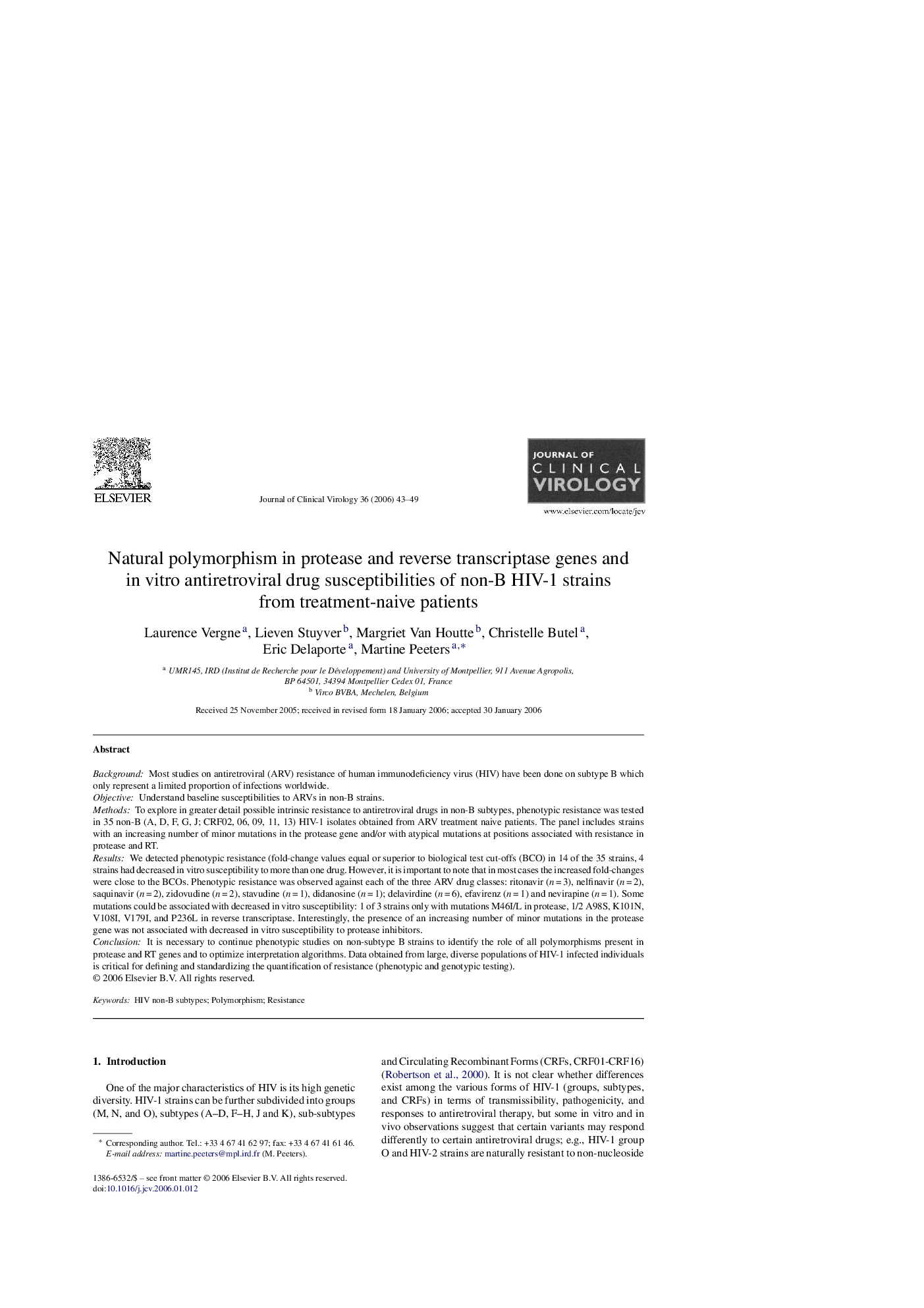| Article ID | Journal | Published Year | Pages | File Type |
|---|---|---|---|---|
| 3370517 | Journal of Clinical Virology | 2006 | 7 Pages |
BackgroundMost studies on antiretroviral (ARV) resistance of human immunodeficiency virus (HIV) have been done on subtype B which only represent a limited proportion of infections worldwide.ObjectiveUnderstand baseline susceptibilities to ARVs in non-B strains.MethodsTo explore in greater detail possible intrinsic resistance to antiretroviral drugs in non-B subtypes, phenotypic resistance was tested in 35 non-B (A, D, F, G, J; CRF02, 06, 09, 11, 13) HIV-1 isolates obtained from ARV treatment naive patients. The panel includes strains with an increasing number of minor mutations in the protease gene and/or with atypical mutations at positions associated with resistance in protease and RT.ResultsWe detected phenotypic resistance (fold-change values equal or superior to biological test cut-offs (BCO) in 14 of the 35 strains, 4 strains had decreased in vitro susceptibility to more than one drug. However, it is important to note that in most cases the increased fold-changes were close to the BCOs. Phenotypic resistance was observed against each of the three ARV drug classes: ritonavir (n = 3), nelfinavir (n = 2), saquinavir (n = 2), zidovudine (n = 2), stavudine (n = 1), didanosine (n = 1); delavirdine (n = 6), efavirenz (n = 1) and nevirapine (n = 1). Some mutations could be associated with decreased in vitro susceptibility: 1 of 3 strains only with mutations M46I/L in protease, 1/2 A98S, K101N, V108I, V179I, and P236L in reverse transcriptase. Interestingly, the presence of an increasing number of minor mutations in the protease gene was not associated with decreased in vitro susceptibility to protease inhibitors.ConclusionIt is necessary to continue phenotypic studies on non-subtype B strains to identify the role of all polymorphisms present in protease and RT genes and to optimize interpretation algorithms. Data obtained from large, diverse populations of HIV-1 infected individuals is critical for defining and standardizing the quantification of resistance (phenotypic and genotypic testing).
